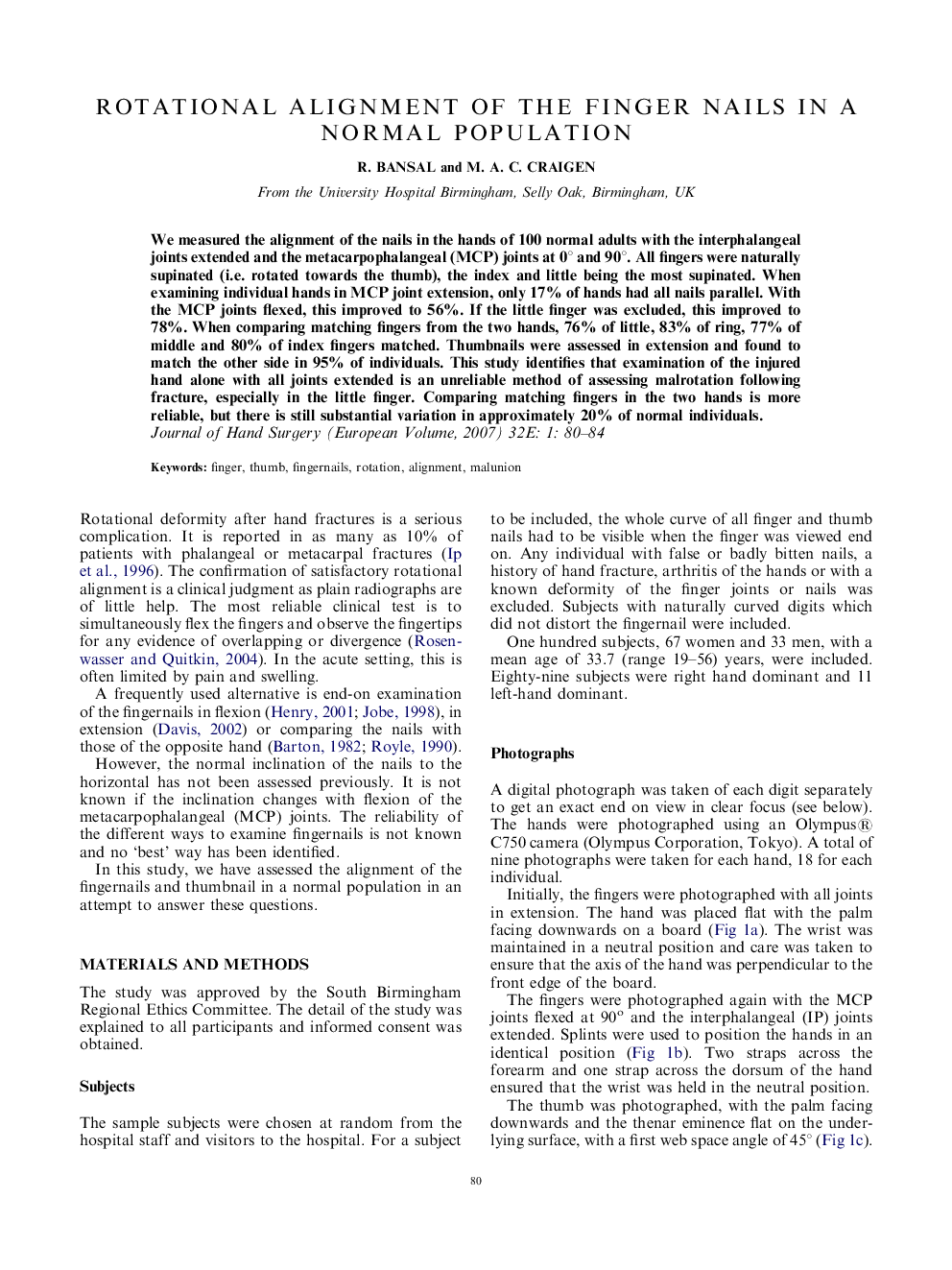| Article ID | Journal | Published Year | Pages | File Type |
|---|---|---|---|---|
| 4071703 | The Journal of Hand Surgery: British & European Volume | 2007 | 5 Pages |
Abstract
We measured the alignment of the nails in the hands of 100 normal adults with the interphalangeal joints extended and the metacarpophalangeal (MCP) joints at 0° and 90°. All fingers were naturally supinated (i.e. rotated towards the thumb), the index and little being the most supinated. When examining individual hands in MCP joint extension, only 17% of hands had all nails parallel. With the MCP joints flexed, this improved to 56%. If the little finger was excluded, this improved to 78%. When comparing matching fingers from the two hands, 76% of little, 83% of ring, 77% of middle and 80% of index fingers matched. Thumbnails were assessed in extension and found to match the other side in 95% of individuals. This study identifies that examination of the injured hand alone with all joints extended is an unreliable method of assessing malrotation following fracture, especially in the little finger. Comparing matching fingers in the two hands is more reliable, but there is still substantial variation in approximately 20% of normal individuals.
Related Topics
Health Sciences
Medicine and Dentistry
Orthopedics, Sports Medicine and Rehabilitation
Authors
R. Bansal, M.A.C. Craigen,
